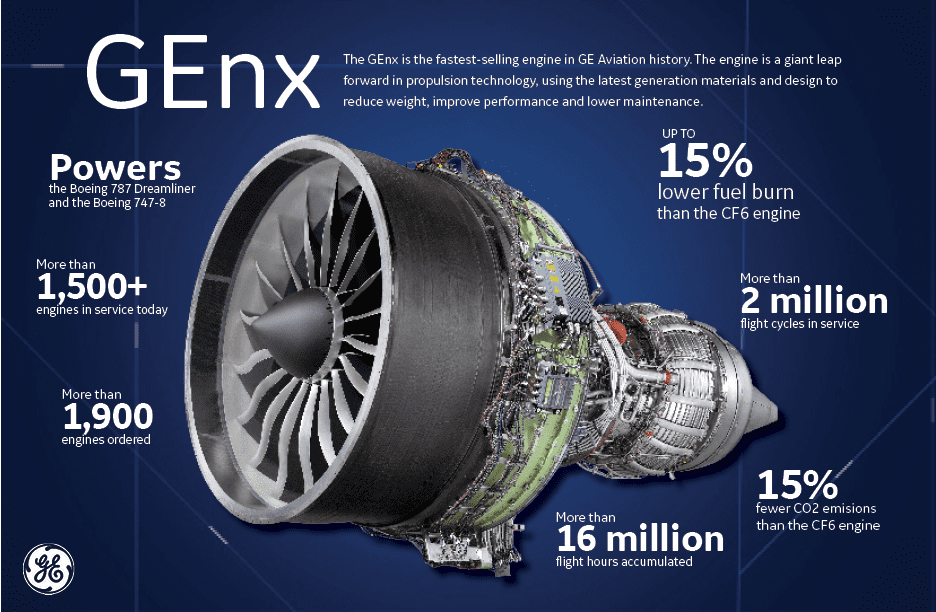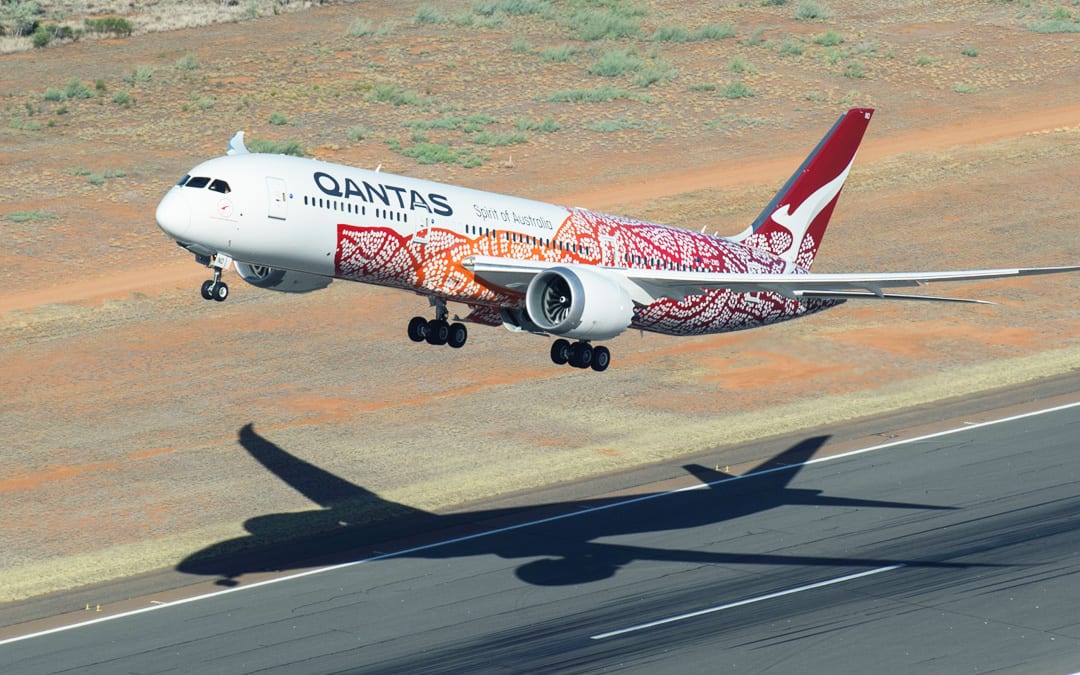Powering history: GE Aviation’s GEnx engines power the world's longest Dreamliner flight from Perth to London
March 26, 2018
GE Aviation is privileged to power the Qantas 787-9 fleet with the GEnx engine and especially the historic flight from Perth to London. On Saturday evening, March 24, around 236 passengers took part in a major milestone in the aviation industry when QF9, taxied down the runway at Perth airport to take off for the first non-stop passenger flight to London — covering more than 9,000 miles with an approximate duration of 17 hours and 20 minutes.
Technology has made the Perth-London flight, the third-longest commercial flight in the world in terms of time, not only possible, but viable. The lighter body of Boeing’s 787 Dreamliner — 50% of which consists of advanced composite materials — its pioneering GEnx engines and advanced onboard systems, add up to 20% lower fuel consumption than other similarly sized aircraft.
In late 2016 when Qantas first announced its intention to fly Dreamliners on a non-stop route between Australia and London’s Heathrow Airport, Qantas Group CEO Alan Joyce said, “This is a game-changing route flown by a game-changing aircraft.” Joyce says that the direct flight “makes travelling to Australia a much more attractive proposition to millions of people. We expect many travelers from Europe will start their time in Australia with a visit to Perth before going on to see other parts of the country.”
Says Max York, CEO of GE Australia, who participated in the celebrations, “The path to this point in the evolution of the Kangaroo Route is a fantastic story, and we’re proud to have contributed. It shows the ability of advanced propulsion technologies like composites and fuel-efficient combustion systems and turbines to revolutionize an industry.”
These advanced technologies like carbon fiber composites, developed and tested over years at GE laboratories, have allowed GE Aviation’s jet-engine-design team to reduce the engine weight by more than 180 kilos. “The efficiencies achieved through the GEnx engine can save Qantas and other airlines up to US$1.6 million per aircraft in fuel costs each year,” says York.
The GEnx’s innovative combustor is not only fuel efficient—it also produces fewer emissions than previous engines in its class. The engines run 40% more quietly than previous technology and the turbulence- and vibration-smoothing systems on the Boeing 787 mean that its ride tends toward glide.
Jim Leister, GEnx-1B Executive Program Manager for GE Aviation said: “For decades, GE aspired to power the passenger aircraft of Qantas – one of the world’s great and historic airlines. Since earning that opportunity in 1987 when Qantas began operating GE CF6-powered Boeing 767s, GE has been focused on driving reliability and economics with the Qantas fleet, which now includes both Boeing and Airbus jetliners powered by GE and CFM International engines.”
Close to 1,900 GEnx engines have been sold to about 50 customers, contributing to GE being the engine supplier of choice for Dreamliner customers over the past decade. GEnx's revenue-sharing participants are IHI Corporation of Japan, GKN Aerospace of England, MTU of Germany, TechSpace Aero (Safran) of Belgium, Safran Aircraft Engines of France and Samsung Techwin of Korea.
A field support team of GE Aviation engineers are stationed in Melbourne, Sydney, Brisbane and London, backed by fleet support specialists who analyze real-time flight data. The team also has 24x7 operations centers in Shanghai, Dubai and Cincinnati.
Get to know GE's GEnx jet engine:
https://www.youtube.com/watch?v=RZXAvplYv2o
Read more about the GEnx:
